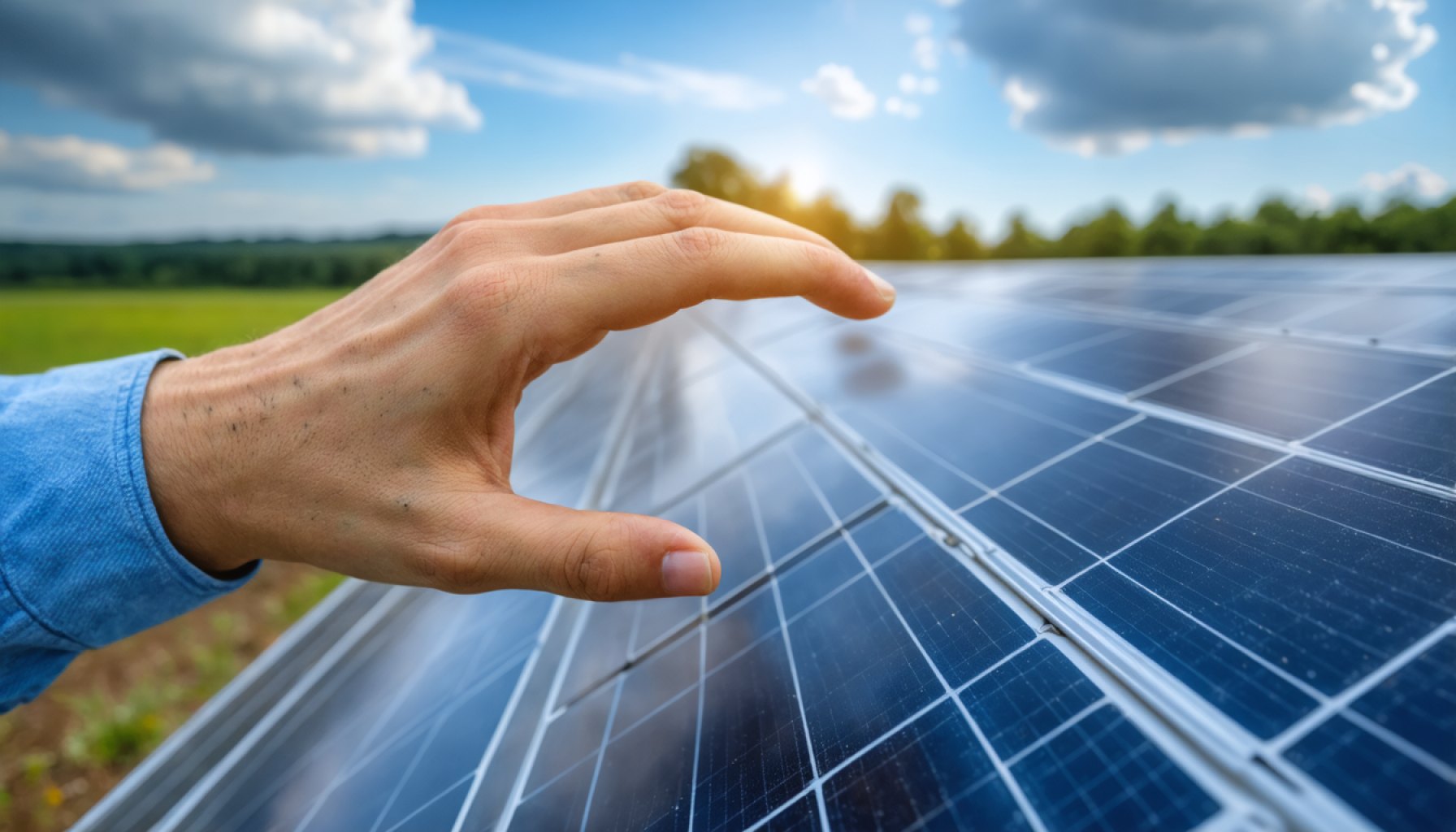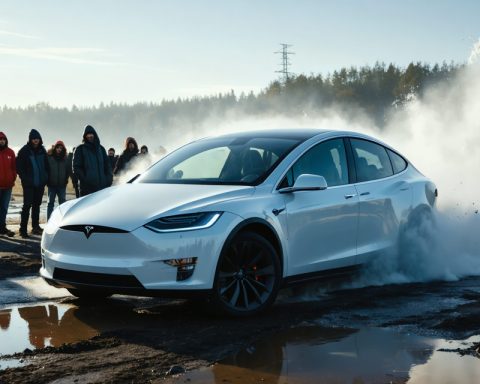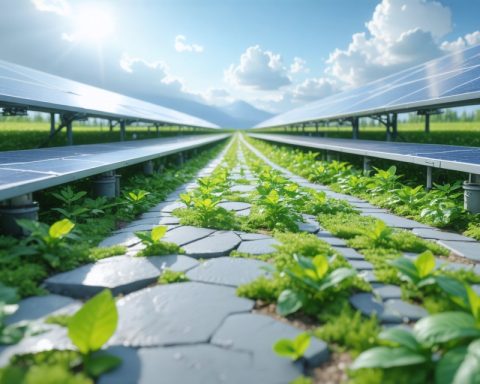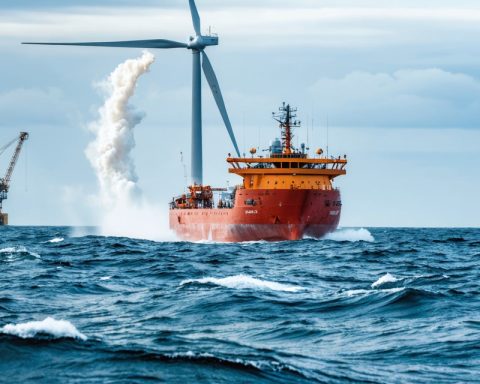- Clean energy is reframed from an environmental necessity to an economic opportunity.
- Global leaders emphasize profits, job creation, and economic growth from renewable energy.
- In the U.S., clean energy is marketed as part of an “American economy” engine, aligning with national interests.
- Brazil projects a future driven by $2 trillion in clean energy investments.
- Former Congressman Bob Inglis highlights that sustainability and profit can coexist, citing examples like Elon Musk.
- Clean energy discourse focuses on aligning with fiscal interests and appealing to policymakers.
- The movement rejects climate alarmism, instead promoting renewables as practical, profitable ventures.
- New narrative encourages collaboration between conservative leaders and business magnates on clean energy.
A fresh wind tugs at the sails of the clean energy movement, steering its narrative from environmental urgency to economic opportunity. As global leaders unveil their newest pitch, they highlight not only the planet-saving virtues of renewable energy but an invigorating promise of wealth and prosperity.
Around the globe, influential figures are repositioning the clean energy discourse. The benefit of cutting greenhouse gas emissions now shares the spotlight with the magnetic pull of profit and job creation—a compelling proposition when nationalism and economic self-interest dominate political landscapes.
In Washington, industry leaders have rebranded solar, wind, and hydropower not just as eco-friendly solutions but as engines of a thriving American economy. Their rallying cry, echoing President Trump’s ideals of “energy dominance,” finds new favor even among skeptical onlookers.
In Brazil, the United Nations’ climate officials push a similar narrative. They paint a picture of an economic future buoyed by $2 trillion in clean energy investments, shifting focus from altruistic motives to the personal gains of embracing renewables—a transition described as unstoppable.
Voices like Bob Inglis’, a former U.S. Republican congressman, resonate with the truth that profit and climate-consciousness are not mutually exclusive. He points to examples like Elon Musk, whose successful ventures in electric vehicles and solar technology illustrate that profit can walk hand in hand with sustainability.
The message, simple yet potent, focuses on meeting audiences where they are—with incentives that align with their core interests. Conservative leaders and business magnates discover common ground on the economic boons of supporting clean energy innovations.
Policy shapers at the forefront stress that this pragmatic approach nudges the needle towards a more sustainable future. Advocates argue the economic case with unwavering clarity, appealing directly to policymakers who prioritize fiscal interests.
Critics of old-school environmental alarmism argue that broadcasting a doom-laden climate crisis has achieved little in provoking meaningful action. By reframing climate solutions as lucrative economic opportunities, the clean energy sector finds new allies and injects momentum into its cause.
The emerging narrative marks a watershed moment—a shift from ethical imperatives to practical, profitable incentives. In charting a course that intertwines self-interest with the greater good, clean energy leaders illuminate a path where environmental salvation and economic prosperity are but two sides of the same coin.
The Economic Revolution of Clean Energy: Profit Meets Purpose
Clean Energy and Economic Opportunity: Beyond Environmental Urgency
The narrative of clean energy is evolving rapidly as global leaders and industry pioneers highlight the dual benefits of environmental preservation and economic growth. This shift in discourse is not just a change in tone but a strategic alignment with global economic interests, significantly influencing policy and investment decisions worldwide.
How-To Steps & Life Hacks: Transitioning to Renewable Energy
1. Understand the Benefits: Renewable energy reduces greenhouse gas emissions and taps into an inexhaustible source of power. It mitigates reliance on fossil fuels, which are subject to volatile pricing and geopolitical influences.
2. Evaluate Location and Resources: Consider local natural resources. Areas with ample sunlight can harness solar power effectively, while regions with strong winds are ideal for wind energy.
3. Financial Planning: Explore government incentives and subsidies for clean energy systems. Many countries offer tax credits and rebates for renewable energy adoption.
4. Select the Right Technology: Choose the appropriate technology based on your needs—solar panels, wind turbines, or hydroelectric systems.
5. Professional Consultation: Hire certified professionals for installation and maintenance. Proper setup ensures maximum efficiency and longevity.
Real-World Use Cases
– Tesla’s Role in Clean Energy: Tesla not only leads in electric vehicles but also in solar energy solutions with products like the Solar Roof and Powerwall battery storage, allowing homeowners to generate and store clean energy directly.
– Brazil’s Renewable Investment: With $2 trillion anticipated in clean energy investments, Brazil emerges as a key player in global renewable energy markets, positioning itself as a powerhouse in hydropower and biofuels.
Market Forecasts & Industry Trends
– Global Job Creation: The International Renewable Energy Agency (IRENA) predicts the renewable energy sector will employ 42 million people worldwide by 2050.
– Technological Innovations: Advances in solar panel efficiency and wind turbine design are making renewable energy more cost-effective than ever.
Reviews & Comparisons
– Solar vs. Wind Energy: Solar energy is ideal for sunny regions, whereas wind energy is better for areas with consistent wind patterns. Both have diminishing costs and increasing efficiency.
– Hydropower’s Reliability: While highly reliable and efficient, hydropower projects often face ecological challenges and lengthy approval processes.
Controversies & Limitations
– Intermittency Issues: Renewable energy sources like solar and wind are intermittent, requiring energy storage solutions to ensure reliability.
– Environmental Impact of Wind Farms: There are concerns about the impact of wind farms on wildlife, particularly birds and bats.
Security & Sustainability
– Energy Security: Renewable energy reduces dependence on imported fuels, enhancing national security.
– Sustainability: Solar and wind technologies have minimal environmental footprints compared to fossil fuels.
Insights & Predictions
– Cost Parity: By 2030, renewables are expected to be the most cost-effective energy sources globally.
– Policy Developments: Stricter environmental regulations and carbon pricing mechanisms are likely to drive further investment in clean energy.
Pros & Cons Overview
– Pros: Clean energy reduces carbon emissions, provides energy independence, creates jobs, and decreases allergy-related ailments by improving air quality.
– Cons: Initial investment costs can be high, and there are challenges related to energy storage and environmental impact on local ecosystems.
Actionable Recommendations
1. Conduct an Energy Audit: Assess your energy usage and determine where renewable energy can be most effective.
2. Invest in Storage Solutions: Pair solar panels with battery storage systems to maximize energy independence.
3. Stay Informed: Keep abreast of the latest developments in renewable energy technology and policy to make informed decisions about energy investments.
For more information on how clean energy is shaping the future, visit United Nations and Tesla.














